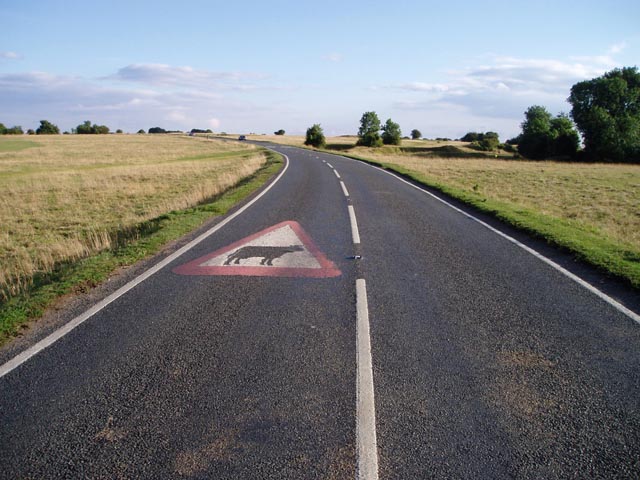I'm five miles in and I have a fly up my nose. My
legs are tired from wobbling on the tussocky grass; baby-fists of chalk protrude
from the path, punching me through my shoes.
It is a much better run than it sounds. The fly doesn't make it.
All year I have found it hard to get back into a
running rhythm and today is the first six-miler in many months. Because I've
been easing my way back to regular running, I've been using Saucony Kinvaras -
they're light, with some cushioning (a little too much for me to 'love' them),
but at least they're flexible - I like a shoe that gives to my foot, not bars
its way. But they're a London shoe; a roadrunner. They're not built for
Cotswold stone. Now that I'm in the land
of the Dymock poets, or Laurie Lee if you prefer, neither they nor I am cut out
for this hilly and changeable terrain.
In only my first mile, the ground gives way so
steeply that I have to walk the single-track road. I start to run again and the
tarmac gives way to a footpath that leads into the tiny
hamlet of Nag's Head -
it has a plaque on the wall listing the eighteen men that died in the First
World War - about a quarter of its inhabitants. One was only seventeen.
Down the side of a cottage, three men are working
and they smile at me as I dance down a pathway littered with clumps of chalk.
Then I realise why they were smiling: the pathway (after a few metres) comes to
an end in a steep hillock like a 20 metre tide of grass. The psychology of the runner
will not let me retrace my steps so early in the game, so I start fighting
through 'the nature' to find the pathway. The wisps of grass are so tall they
brush against my face, then the nettles attack.
All around my legs up to hips start tingling with stings (that go on to
last for days). I angle my way up the hill only to discover there is a clear
and short path that I somehow missed. The next couple of miles are all under
the dappled luminosity of beeches. And I'm STILL climbing. To my left is a shorn
meadow, golden, with great drums of gathered hay. There is something
colour-wheel perfect about these three shades, gold, green and blue, that feels
restorative, like an easy yoga-stretch for the eye.
These are the landscapes that inspired the Dymock
poets, a loose collection of lads who, for one reason or another, found their
way out of London to their quiet hideaway. Although Edward Thomas was closely
connected with them, he wasn't yet writing poetry when he stayed here with
Robert Frost, Lascelles Abercrombie, and Wilfrid Gibson. The Dymockers set
themselves against the modernist turn that began to take place in the city.
When Ezra Pound was busy recruiting Hilda Doolittle and Richard Aldington to
his Imagist collective (espousing the importance of directness, precision, and
spare musicality that ignored the metronome), the Georgians were rustic and
simple, employing the language of the everyday, imitating the natural cadences
of speech (we runners know all about cadence). It's hard not to get behind an
aesthetic whose founding principle is so democratic. Like pages tossed into a
fire, many of the Dymock poets were consumed in the First World War. Edward
Thomas, a career spent in prose, did not live to see his first collection of
poems in print.
 |
| Lascelles Abercrombie in later life |
The beech cover breaks and I'm in a gulley that
has been recently cut. Stubs of weeds snap and poke at me under foot; and the
nettles, sensing their chance for dominance are creeping back into the empty
space left by the cutter. After another mile I am back on single-track tarmac.
It looks like a painting. The road, lined with hedges, runs straight to the
horizon, then gold and green fields appear either side. A tractor ambles over the hill and I have to
flatten myself into the side of the road as it thunders past. And it is only
then that I see a caterpillar, in the middle of the road, perfectly
perpendicular, in full sprint to the other side. It oxbows and stretches in a
line like it has done this journey tens of times. I laugh at the preposterous
dynamic of perspective.
Signs of life are ahead. I reach a junction which
signposts one way for Bath; the other, Cirencester. Do I want times-old Roman, or times new
Roman? After a few yards, I decide neither. There is no footpath and the
thunderous traffic is so fast and heavy that the distraction of a dinging text
in a lorry-driver's cab would be enough to kill me. I am running for nothing,
so I turn back onto the footpath and retrace my steps.
After Thomas's death, Harold Monro's collections
of Georgian Poetry continued until
that hot year of modernism, 1922; the year that saw the publication of Ulysses, Jacob's Room, and The Waste
Land. Even though Georgian Poetry
sold more than 70,000 copies, its moment had passed. How could a verse form, so
sense-making, so clear in its expression, survive the chaotic lunacy of a war
that slaughtered so many?


No comments:
Post a Comment